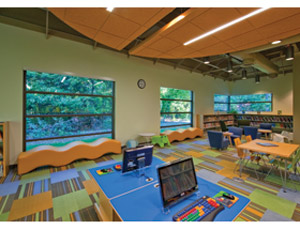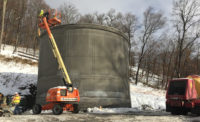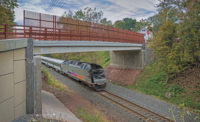A complex $37.6 million remediation project cleaned up a Superfund site in Sayerville, New Jersey, tainted with chemicals and hazardous wastes.

For more than 30 years the 12-acre Horseshoe Road site near the Raritan River in Sayerville housed various operations producing coal tar, epoxy resins, paint pigments, sealants and pesticides. Poor waste handling practices and the dumping of waste materials left the site contaminated.
In 1981 the U.S. Environmental Protection Agency (EPA) learned of the site when a brush fire exposed 70 partially filled drums of silver cyanide, acetonitrile and ethyl acetate. Subsequent investigations found the site contaminated with significant amounts of VOCs, base-neutral compounds, heavy metals, pesticides and PCBs.
The site encompasses three adjacent areas; the Sayerville Pesticide Dump, the Horseshoe Road Drum Dump and the former Atlantic Development Corporation (ADC) facility. About 63 residential properties are located within a half mile of the site and about 14,000 people obtain drinking water from public wells within four miles.
The U.S. Army Corps of Engineers selected the Conti Group, Edison, N.J., to rehabilitate the site. Over 170,000-tons of soil were excavated. The soil, containing 30 contaminates classified under five different waste streams, was transported offsite for disposal at seven treatment facilities, some as far away as Utah.
Conti constructed a 1,200-ft railroad spur to the site, enabling direct loading of wastes onto railcars for shipment to treatment facilities. Transporting material by rail removed truck traffic from local streets and also increased the amount of material that could be removed from the site each day, which saved time and money.
Extensive pre-excavation soil sampling identified the horizontal and vertical locations of the different contaminates at the site. Identifying the location of contaminates enabled Conti to implement a schedule with precise excavation techniques that segmented waste streams bound for different treatment facilities.
“The premise behind sampling ahead of time is we can directly load the material into a railcar,” explains Andrew Weber, Conti’s project manager. “There is no reason to stockpile and double handle the material.”
Areas containing hazardous material were treated differently. Soils contaminated with hazardous wastes were excavated, stockpiled and then re-sampled to separate out the hazardous materials. While the technique slowed the operation and increased sampling costs, it reduced the amount of soil originally anticipated to be hazardous by 50 percent or about 3,800 tons. Non-hazardous material could be disposed less expensively, resulting in over $300,000 savings in disposal costs.
Braced excavations removed and segregated 15,000-cu-yds of deeper soils to a depth of 22 ft.
The project operated a 130-gpm water treatment facility to treat the water dewatered during the excavation. Well into the project modifications to the treatment facility were required due to higher than anticipated concentrations of contaminants.
Key Players
Developer/Owner: US Army Corps of Engineers (USACE), Kansas City District General Contractor and Construction
Manager: The Conti Group, Edison, N.J.*
Civil Engineer: CDM, Inc., Cambridge,Mass.
*Submitted Project to New York Construction



Post a comment to this article
Report Abusive Comment